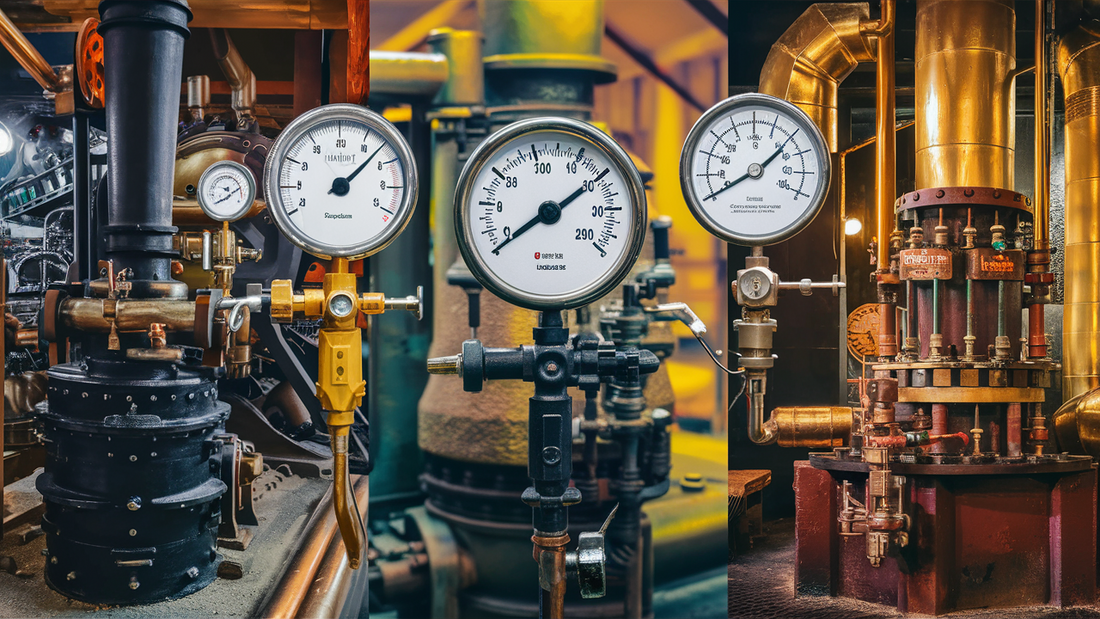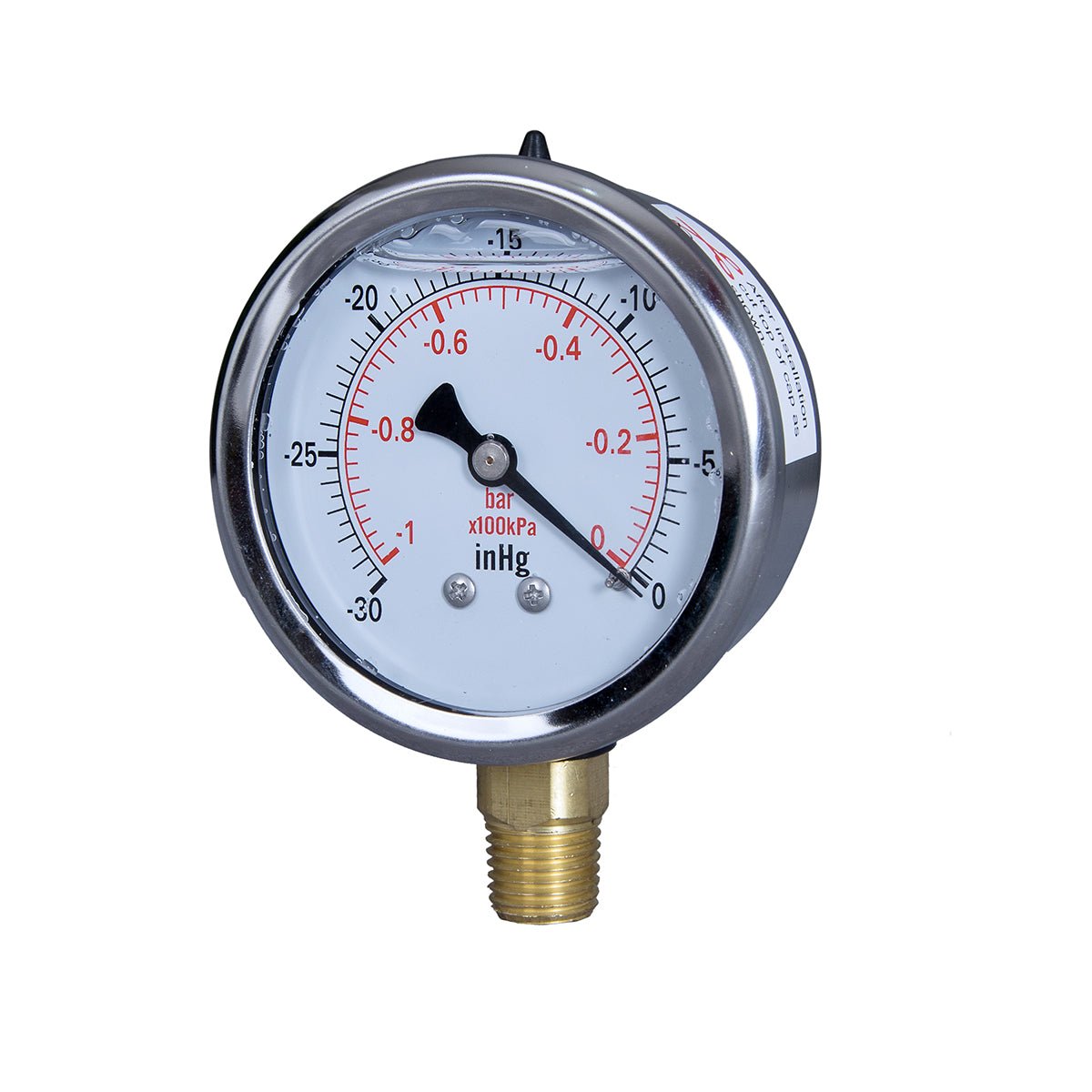
What is a Pressure Gauge? Types, Operating Principles, and Industrial Applications

A pressure gauge is a device engineered to measure the pressure of gases or liquids within a closed system. It serves a critical function in ensuring operational safety, sustaining equipment efficiency, and facilitating quality control across diverse industries—spanning from oil and gas to food production.
There exists a variety of pressure gauge types, each meticulously designed to accommodate specific pressure ranges, environmental conditions, and media characteristics. In this article, we will present the six most commonly utilized types, elaborating on their operational mechanisms, advantages, and typical application scenarios.
1. Bourdon Tube Pressure Gauge
Principle:
When pressure is applied internally to the curved Bourdon tube, it exhibits a tendency to straighten. This mechanical displacement drives a pointer across a calibrated dial.
Features:
- Range: 0 to 1,600 bar (Customizable)
- Accuracy: ±2.5%
- Material: Brass or stainless steel

Application Scenarios:
Hydraulic systems, pneumatic systems, air compressors, and general industrial machinery
Advantages:
It is the most widely adopted mechanical gauge, characterized by durability, reliability, and cost-effectiveness for the majority of industrial and commercial applications.
2. Diaphragm Pressure Gauge
Principle:
Pressure induces deflection in a metal diaphragm, which is interconnected with a movement mechanism that actuates the pointer.

Features:
- Range: 0 to 40 bar (optimal for low-pressure systems, Customizable)
- Accuracy: ±1.6% FS
- Media Compatibility: Aggressive or viscous fluids
Application Scenarios:
Food and beverage, pharmaceutical, chemical processing, wastewater treatment
Advantages:
Well-suited for corrosive, contaminated, or crystallizing media, particularly in contexts requiring sanitary or flush-mounted configurations.

3. Capsule Pressure Gauge
Principle:
Employs two thin, corrugated metal diaphragms welded together to form a capsule. Variations in gas pressure induce expansion or contraction of the capsule.

Features:
- Range: 0 to 600 mbar (millibars)
Application Scenarios:
Very low-pressure gas systems, ventilation systems, and medical equipment
Advantages:
Ideal for the measurement of extremely low pressures, specifically for dry and non-corrosive gases.

4. Differential Pressure Gauge
Principle:
Measures the disparity between two pressure points, as opposed to absolute pressure.
Features:
- Range: Customizable based on specific application requirements
Application Scenarios:
Filter monitoring, flow measurement, and tank level monitoring
Advantages:
Delivers real-time insights into pressure drop, which is of critical importance in filtration or heat exchanger systems.
5. Digital Pressure Gauge
Principle:
Utilizes a sensor (such as a strain gauge or piezoresistive element) in conjunction with electronic components to convert pressure into a digital display.
Features:
- Range: Extremely broad, spanning from vacuum to thousands of bars
- Functions: Peak hold, data logging, backlighting, alarm systems
Application Scenarios:
Laboratory testing, calibration procedures, and field service operations
Advantages:
Offers high precision, multifunctionality, and suitability for environments where analog dials are difficult to read or log data from.
6. Absolute Pressure Gauge
Principle:
Measures pressure relative to a perfect vacuum (0 Pa) rather than atmospheric pressure.
Application Scenarios:
High-altitude simulation, vacuum systems, aerospace testing
Advantages:
Necessary in situations where atmospheric fluctuations would impact standard pressure readings.
Comparison Table.
|
Gauge Type
|
Best For
|
Pressure Range
|
Key Advantage
|
|
Bourdon Tube
|
General industry
|
0–1600 bar
(Customizable)
|
Durable, economical
|
|
Diaphragm
|
Corrosive/viscous fluids
|
0–40 bar
(Customizable)
|
Sanitary, easy to clean
|
|
Capsule
|
Low-pressure gases
|
0–600 mbar
(Customizable)
|
High sensitivity
|
|
Differential
|
Monitoring flow/filters
|
Varies
|
Dual-inlet measurement
|
|
Digital
|
Lab, calibration
|
Wide
|
High precision & features
|
|
Absolute
|
Vacuum or altitude measurement
|
0–1,000 bar (abs)
(Customizable)
|
Not affected by barometric pressure
|
Conclusion
Pressure gauges are available in numerous forms—mechanical or digital, direct or differential—and the selection of the appropriate one hinges on a comprehensive understanding of the system's pressure range, the nature of the media involved, and the operating environment.
Whether addressing high-pressure hydraulics or delicate low-pressure gas flows, there exists a gauge specifically tailored to meet your requirements.
👉 Explore Our Full Range of Pressure Gauges
At jivtopressuregauge.com, we supply high-quality Bourdon tube, diaphragm, differential, and digital pressure gauges trusted by industries worldwide.
